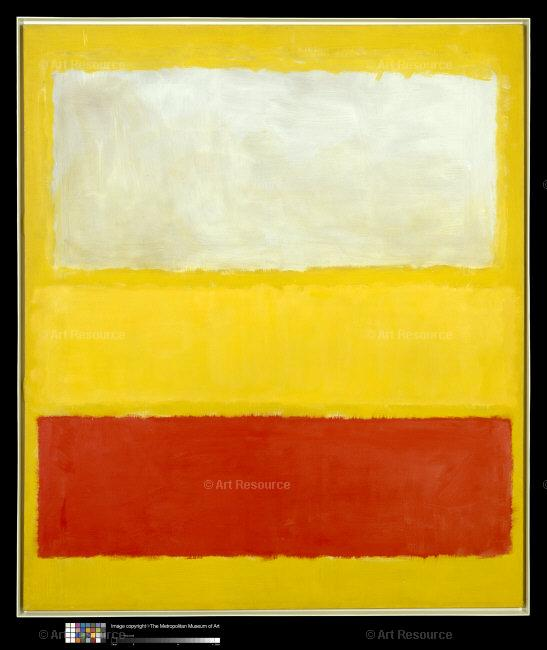
Few artists are as iconic as Mark Rothko. From eliciting transcendental experiences to groans that a preschooler could draw better, Rothko has been one of the most popular and polarizing artists of the 20th century. Since his death in 1970, his work has gained even greater acclaim and prices for his masterpieces have soared. Before your next museum visit — or art portfolio investment — here’s a quick primer on one of the 20th century’s greatest artists.
- He was born in Latvia, emigrated to Oregon, and English was his 4th language.
Born Markus Rothkowitz in modern-Latvia, Rothko spent his childhood in the USSR before emigrating with his mother through Ellis Island in 1913. The artist then traversed the country with his mother to settle with his father and older brother in Oregon, where he graduated high school early before attending Yale.
Rothko experimented with many styles throughout his early days, and was unable to find much success for the first part of his career. In fact, it wasn’t until 1949 — when Rothko was 46 — that he created what would become his signature floating rectangles on fields of color style.
2. He has sold 97 paintings for $1.37B at auction since 2006, with an average sales price of $13.3M.
Rothko is as a blue chip artist at the very top of the game, and his paintings have routinely been among the highest priced at auction. Since 2006, 97 of Rothko’s paintings have traded for an average of $13.3M at auction. The following dashboard — compiled and built out by the Athena Art Finance Team — shows how his paintings have continued to endure and capture the hearts of art collectors globally.
The Hammer Ratio is the measurement of an artwork’s performance against its low auction estimate published ahead of the sales. This metric illustrates that Rothko consistently outperformed expectations, hammering above pre-sale low estimates by 30% on average. This metric, unique to Athena, provides additional context for just how historically strong works by this artist have performed, and speaks to overall demand for his artworks.

3. He reclaimed murals that he created for The Four Seasons restaurant.
In 1958, while still relatively obscure, Rothko was commissioned by the owners of the new Four Seasons restaurant in New York City to create a series of murals for its fine dining establishment. Rothko was under the impression the paintings would adorn an employee mess hall, but there was clearly a miscommunication. After eating at the world-renowned, upscale restaurant with his wife and becoming overwhelmed by the opulence and extravagance, Rothko returned the payment of $35,000 — a large sum at the time — and donated the 30 murals he had created to the Tate Museum in London. He remarked at the time “Anybody who will eat that kind of food for those kind of prices will never look at a painting of mine.”
4. No, your child could not paint a Rothko.
While deceptively simple, Rothko was one of the first major artists to experiment with luminosity and paid close attention to the formal elements of his large-scale paintings. His work attempted to exemplify complex ideas expressed in simplistic forms, and while eponymous with the bright forms that you may see in the MoMA, in his later years Rothko moved into darker reds and shades of color to reflect his more somber mood in his work. His work was incredibly labor intensive, requiring washes, blending, and special care of his canvases. He would even rent out large spaces and buildings to ensure the desired effect could be recreated in his home studio.

5. His painting Orange, Red, Yellow, 1961 broke the artist’s record for most expensive work sold publicly.
Rothko’s Orange, Red, Yellow, 1961 set a record price for the artist when it sold for $86.9M including buyer’s premium (hammer price: $77.5M) at Christie’s Post-War & Contemporary Art sale on 5/8/12. This work outperformed its low estimate of $35.0M at a hammer ratio of 2.2x. It was one of the most expensive post-war and contemporary artworks sold at the time, reflecting the rise in valuations as the art market grew globally, with collectors and investors forced to compete with a larger international audience.

6. Rothko’s final work was a non-denominational chapel.
Rothko fell into a depression in his later years, and created many works reflecting this mental state, like the painting (Earth and Green, 1955) below.
Rothko’s final commissioned project, The Rothko Chapel in Houston, was designed as a non-denominational meditative space to invite reflection, and was accompanied by 14 large black paintings. Though Rothko had built a replica in his studio in New York, he unfortunately passed away and was unable to see the completed project in Houston, TX.
7. Since 2006, his paintings have achieved a 12.6% compound annual growth rate.
Athena’s proprietary analysis illustrates that since 2006, Rothko’s average price for paintings had grown at a compound 12.6% annually. Moreover, when evaluating this statistic through 2020, prior to the drop in offerings related to Covid, that growth rate was an impressive 18.4%.
Past performance does not guarantee future results.
You don’t have to know art to recognize the significance of these t returns. If you’re interested in learning more about art finance and how blue-chip paintings are valued, please visit learn more about Yieldstreet and Athena’s art finance.
What's Yieldstreet?
Yieldstreet provides access to alternative investments previously reserved only for institutions and the ultra-wealthy. Our mission is to help millions of people generate $3 billion of income outside the traditional public markets by 2025. We are committed to making financial products more inclusive by creating a modern investment portfolio.







